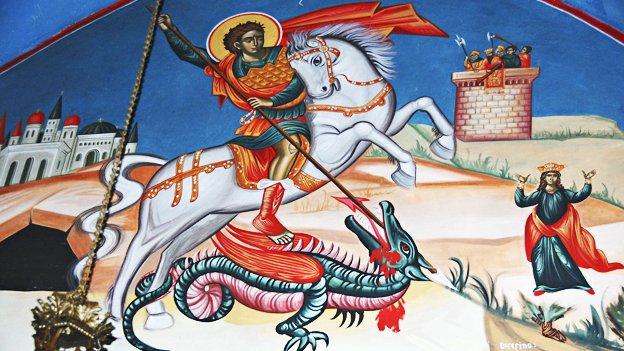St George's Day: Who was England's patron saint?
- Published

It's down to the man, the myth and the mayhem that St George became so popular, said historian Dr Michael Carter
St George's Day is the patron saint's day of England, marked around the country on 23 April each year. But who was the dragon-slaying soldier named George who became the patron saint of England?
Who was he?
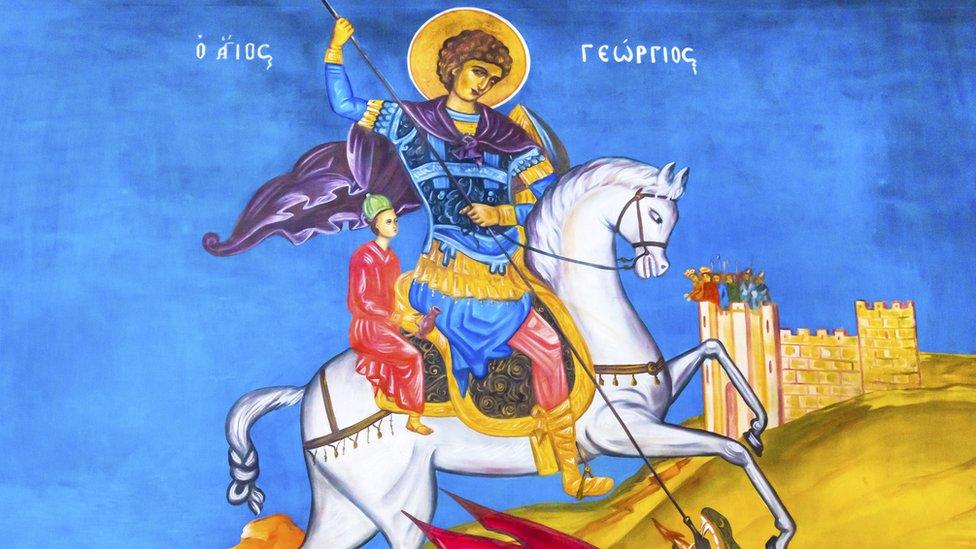
George is also patron saint of many other countries including Portugal, Germany and Greece.
"He almost certainly was a real historical figure - probably a Christian Roman soldier named Georgios," said Dr Michael Carter, a historian at English Heritage.
It is likely he was born in Cappadocia, Turkey around AD270 and was martyred at Nicomedia, or Lydda, modern day Israel, in the Roman province of Palestine in AD303, he said.
What was he like?

St George was a glamorous saint who embodied good against evil, said Dr Carter
"He's a glamorous saint. He's said to be very handsome, there he is on his charger slaying a dragon," said Dr Carter.
"His story is something which crosses cultures and periods. He represents honour, bravery and he had royal and military associations.
"There's so much in his legend that resonates with English values. He really is a patron of modern Britain in that he's quite diverse and international.
"It's down to the man, myth and mayhem that he became so popular."
What about the dragon?
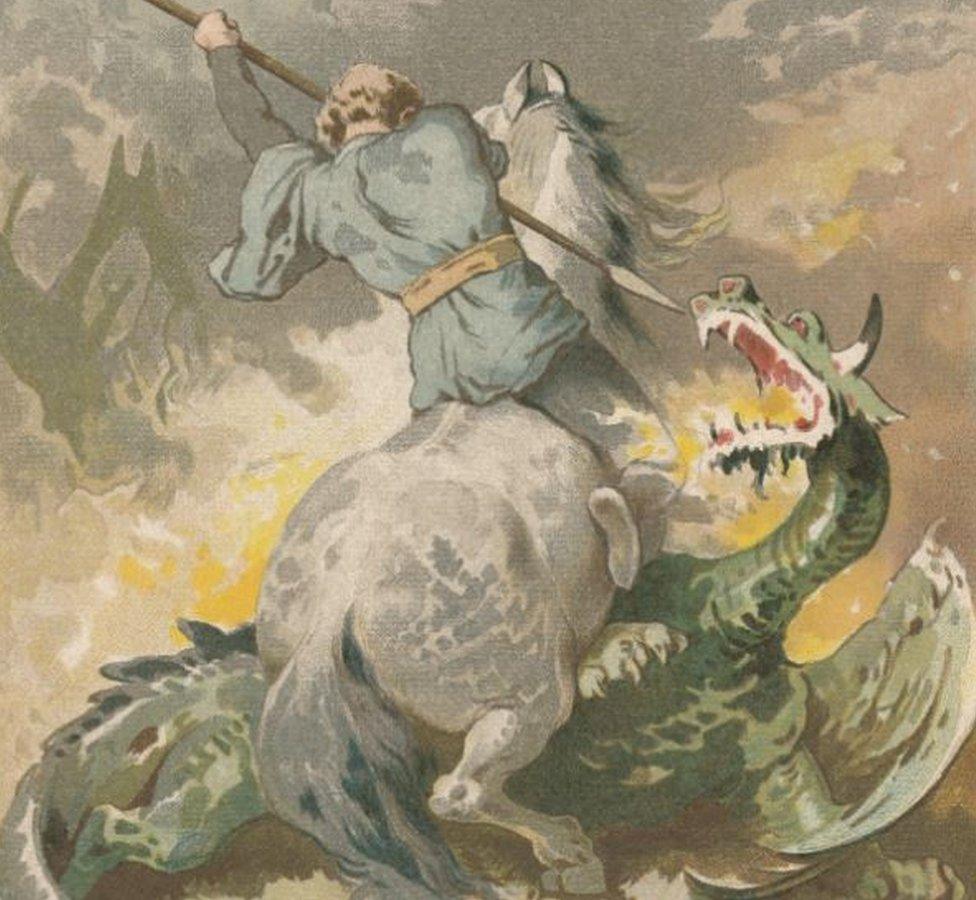
This lithograph from a drawing by Alexander Zick published in 1898 shows the legend of George and the dragon
This story was set in Silene in Libya, which was being terrorised by a ferocious sea-dragon, according to Candida Moss, Professor of New Testament and Early Christianity at the University of Notre Dame.
"The inhabitants of the city had, under the king's command, given their children to be consumed by the dragon until finally the time came for the king's own daughter to be sacrificed," she told the BBC.
"George, however, intervened, promising the king that if they were all baptised he would slay the dragon. The king did as he was told, George killed the dragon and everyone was saved."
The legend comes from ideas of embodiment of good and evil and combat between heroes and monsters, said Dr Carter.
"It is basically an archetype. It's good conquers evil," he said.
How did George die?
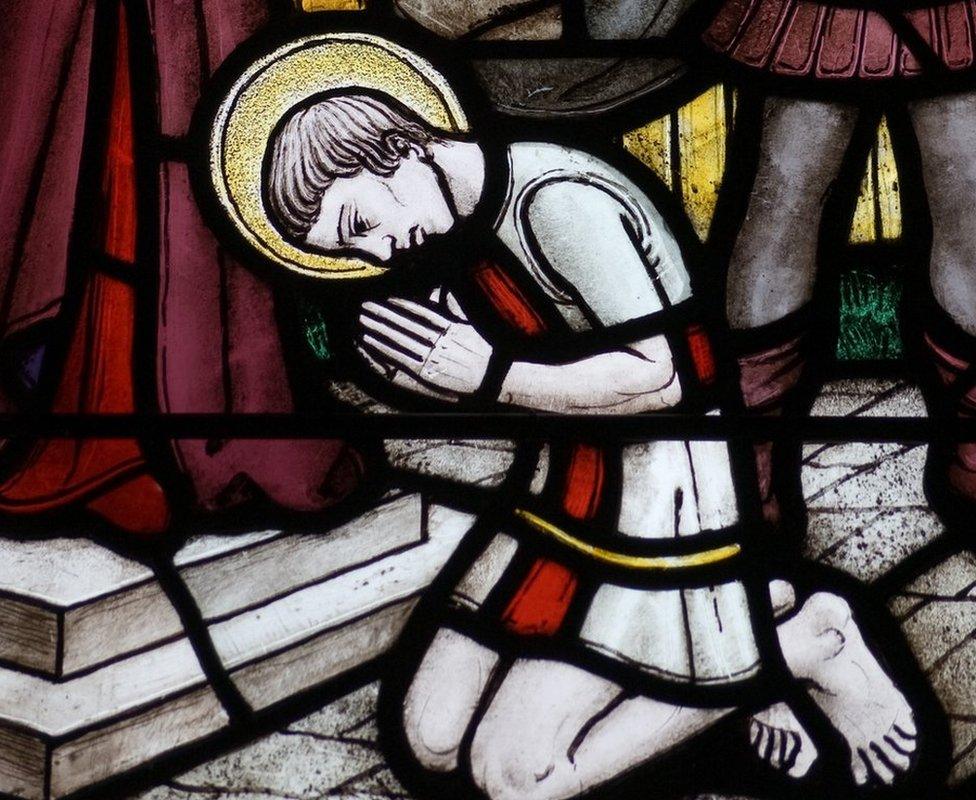
St George was tortured and beheaded during the Roman Emperor Diocletian's persecution of Christians
Roman Emperor Diocletian had ordered the persecution of Christians but St George refused to give up his faith and make a sacrifice to pagan gods, said Dr Carter.
"Some stories say he was tortured for seven years in which every conceivable horror was inflicted upon him," said Dr Carter. "He was crucified, racked, broken on the wheel, boiled alive and poisoned."
"Legend says he died on three occasions and was brought back to life by St Michael. He was ultimately beheaded."
Why did he become the patron saint of England?
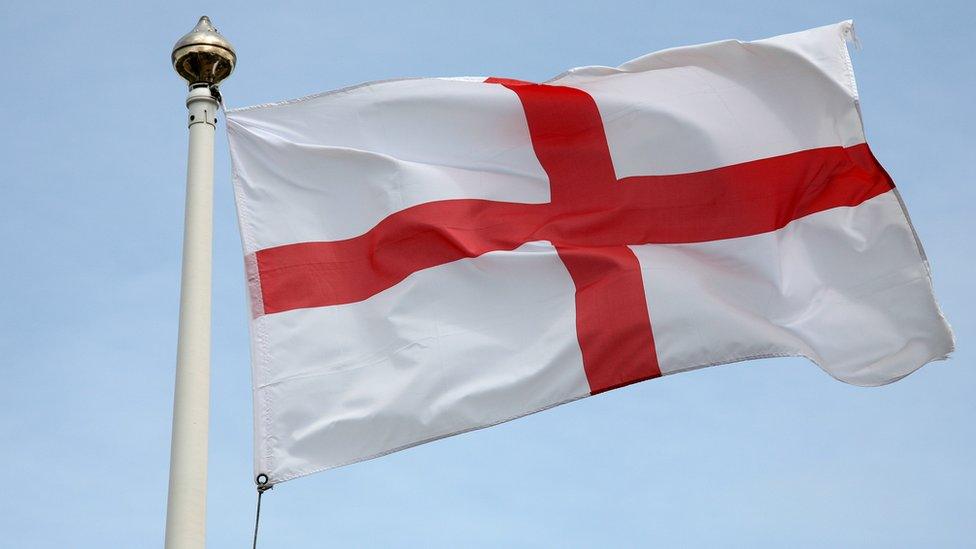
The English flag features the cross of St George
"Soon after his death, George was venerated as a saint, with a feast day on 23 April, the supposed day of his martyrdom," said Dr Carter.
He is also patron saint for Aragon, Catalonia, Georgia, Lithuania, Palestine, Portugal, Germany, Greece, Moscow, Istanbul, Genoa and Venice - second to St Mark.
Why isn't St George's Day a Bank Holiday?

People took to the streets of Nottingham to celebrate St George's Day in 2017
Following the Battle of Agincourt in 1415, St George's Day became one of the most important feast days in the English calendar, said Dr Carter.
"And in 1399 his feast day is elevated to being a holiday honoured as same level as Christmas," he said.
"But due to the formation of English national identity following the protestant reformation saints fell out of favour and did not regain their significance."
A version of this story was first published on 23 April 2018
Related topics
- Published23 April 2023
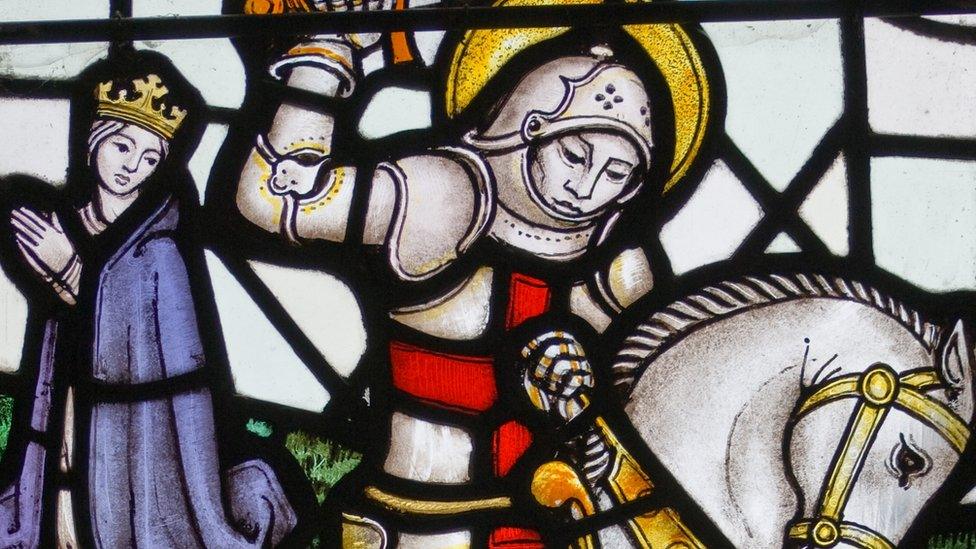
- Published23 April 2014
